Dosing & Uses
Dosage Forms & Strengths
tablet
- 2.5mg (Norvasc, generic)
- 5mg (Norvasc, generic)
- 10mg (Norvasc, generic)
oral suspension
- 1mg/mL (Katerzia)
oral solution
- 1mg/mL (Norliqva)
Hypertension
Indicated for hypertension, to lower blood pressure
Lowering blood pressure reduces the risk of fatal and nonfatal cardiovascular events, primarily strokes and myocardial infarctions
5 mg/day PO initially; may be increased by 2.5 mg/day every 7-14 days; not to exceed 10 mg/day maintenance: 5-10 mg/day
Adjust dosage according to blood pressure goals
Angina & Coronary Artery Disease
Treatment of chronic stable angina, vasospastic angina (Prinzmetal or variant angina), and angiographically documented CAD in patients without heart failure or EF <40%
5-10 mg/day PO initially; maintenance: 10 mg/day PO
Dosage Modifications
Renal impairment
- Pharmacokinetics of amlodipine are not significantly affected by renal impairment; therefore no dosage adjustment necessary
Hepatic impairment
- Lower initial dose may be required for patients with hepatic impairment
- Consider starting with 2.5 mg/day PO
Dosage Forms & Strengths
tablet
- 2.5mg (Norvasc, generic)
- 5mg (Norvasc, generic)
- 10mg (Norvasc, generic)
oral suspension
- 1mg/mL (Katerzia)
oral solution
- 1mg/mL (Norliqva)
Hypertension
<6 years: Safety and efficacy not established
6-17 years
- Indicated for hypertension, to lower blood pressure
- Lowering blood pressure reduces the risk of fatal and nonfatal cardiovascular events, primarily strokes and myocardial infarctions
- 2.5-5 mg/day PO; doses above 5 mg/day have not been studied
Dosage Modifications
Renal impairment
- Pharmacokinetics of amlodipine are not significantly affected by renal impairment; therefore no dosage adjustment necessary
Hepatic impairment
- Lower initial dose may be required for patients with hepatic impairment
- Consider starting with 2.5 mg/day PO
Start dosing at low end of dosing range; elderly patients have greater frequency of decreased renal, hepatic or cardiac function
Hypertension
2.5-5 mg/day PO initially; may be increased by 2.5 mg/day every 7-14 days; not to exceed 10 mg/day PO; maintenance: 5-10 mg/day PO
Angina & Coronary Artery Disease
Treatment of chronic stable angina, vasospastic angina (Prinzmetal or variant angina), and angiographically documented CAD in patients without heart failure or EF <40%
2.5-10 mg/day PO initially; maintenance: 10 mg/day PO
Angina
2.5-10 mg/day PO; maintenance: 10 mg/day
Interactions
Interaction Checker
No Results

Contraindicated
Serious - Use Alternative
Significant - Monitor Closely
Minor

Contraindicated (1)
- dantrolene
dantrolene, amlodipine. Either increases toxicity of the other by Mechanism: pharmacodynamic synergism. Contraindicated. Rare incidence of cardiovascular collapse and marked hyperkalemia observed when coadministered; may be higher risk with nondihydropyridine calcium channel blockers.
Serious - Use Alternative (14)
- apalutamide
apalutamide will decrease the level or effect of amlodipine by affecting hepatic/intestinal enzyme CYP3A4 metabolism. Avoid or Use Alternate Drug. Coadministration of apalutamide, a strong CYP3A4 inducer, with drugs that are CYP3A4 substrates can result in lower exposure to these medications. Avoid or substitute another drug for these medications when possible. Evaluate for loss of therapeutic effect if medication must be coadministered. Adjust dose according to prescribing information if needed.
- chloramphenicol
chloramphenicol will increase the level or effect of amlodipine by affecting hepatic/intestinal enzyme CYP3A4 metabolism. Avoid or Use Alternate Drug.
- chloroquine
chloroquine will increase the level or effect of amlodipine by affecting hepatic/intestinal enzyme CYP3A4 metabolism. Avoid or Use Alternate Drug.
- conivaptan
conivaptan will increase the level or effect of amlodipine by affecting hepatic/intestinal enzyme CYP3A4 metabolism. Avoid or Use Alternate Drug. Calcium channel blockers with depressant effects on the sinus and AV nodes could potentiate dronedarone's effects on conduction. Give a low dose of calcium channel blockers initially and increase only ECG is reviewed and tolerated.
- diltiazem
diltiazem will increase the level or effect of amlodipine by affecting hepatic/intestinal enzyme CYP3A4 metabolism. Avoid or Use Alternate Drug. Concomitant use with amlodipine and diltiazem reported an a 60% increase in amlodipine AUC. Monitor increased effects and toxicities (eg, bradycardia, sinus arrest, decreased cardiac output) if amiodarone is concomitantly used with nondihydropyridine calcium channel blocker (ie, diltiazem).
- enzalutamide
enzalutamide will decrease the level or effect of amlodipine by affecting hepatic/intestinal enzyme CYP3A4 metabolism. Avoid or Use Alternate Drug.
- fexinidazole
fexinidazole will increase the level or effect of amlodipine by affecting hepatic/intestinal enzyme CYP3A4 metabolism. Avoid or Use Alternate Drug. Fexinidazole inhibits CYP3A4. Coadministration may increase risk for adverse effects of CYP3A4 substrates.
- idelalisib
idelalisib will increase the level or effect of amlodipine by affecting hepatic/intestinal enzyme CYP3A4 metabolism. Avoid or Use Alternate Drug. Idelalisib is a strong CYP3A inhibitor; avoid coadministration with sensitive CYP3A substrates
- ivosidenib
ivosidenib will decrease the level or effect of amlodipine by affecting hepatic/intestinal enzyme CYP3A4 metabolism. Avoid or Use Alternate Drug. Avoid coadministration of sensitive CYP3A4 substrates with ivosidenib or replace with alternate therapies. If coadministration is unavoidable, monitor patients for loss of therapeutic effect of these drugs.
- lofexidine
lofexidine, amlodipine. Either increases effects of the other by pharmacodynamic synergism. Avoid or Use Alternate Drug. Avoid coadministration with other drugs that decrease pulse or blood pressure to mitigate risk of excessive bradycardia and hypotension.
- lonafarnib
amlodipine will increase the level or effect of lonafarnib by affecting hepatic/intestinal enzyme CYP3A4 metabolism. Avoid or Use Alternate Drug. If coadministration of lonafarnib (a sensitive CYP3A substrate) with weak CYP3A inhibitors is unavoidable, reduce to, or continue lonafarnib at starting dose. Closely monitor for arrhythmias and events (eg, syncope, heart palpitations) since lonafarnib effect on QT interval is unknown.
lonafarnib will increase the level or effect of amlodipine by affecting hepatic/intestinal enzyme CYP3A4 metabolism. Avoid or Use Alternate Drug. Avoid coadministration with sensitive CYP3A substrates. If coadministration unavoidable, monitor for adverse reactions and reduce CYP3A substrate dose in accordance with product labeling. - nifedipine
nifedipine will increase the level or effect of amlodipine by affecting hepatic/intestinal enzyme CYP3A4 metabolism. Avoid or Use Alternate Drug.
- simvastatin
amlodipine increases levels of simvastatin by Other (see comment). Avoid or Use Alternate Drug. Comment: Benefits of combination therapy should be carefully weighed against the potential risks of combination. Potential for increased risk of myopathy/rhabdomyolysis. Limit simvastatin dose to no more than 20 mg/day when used concurrently.
- voxelotor
voxelotor will increase the level or effect of amlodipine by affecting hepatic/intestinal enzyme CYP3A4 metabolism. Avoid or Use Alternate Drug. Voxelotor increases systemic exposure of sensitive CYP3A4 substrates. Avoid coadministration with sensitive CYP3A4 substrates with a narrow therapeutic index. Consider dose reduction of the sensitive CYP3A4 substrate(s) if unable to avoid.
Monitor Closely (138)
- acebutolol
acebutolol and amlodipine both increase anti-hypertensive channel blocking. Modify Therapy/Monitor Closely.
- aldesleukin
aldesleukin increases effects of amlodipine by pharmacodynamic synergism. Use Caution/Monitor. Risk of hypotension.
- alfuzosin
alfuzosin and amlodipine both increase anti-hypertensive channel blocking. Use Caution/Monitor.
- amifostine
amifostine, amlodipine. Either increases effects of the other by pharmacodynamic synergism. Modify Therapy/Monitor Closely. Coadministration with blood pressure lowering agents may increase the risk and severity of hypotension associated with amifostine. When amifostine is used at chemotherapeutic doses, withhold blood pressure lowering medications for 24 hr prior to amifostine; if blood pressure lowering medication cannot be withheld, do not administer amifostine.
- asenapine
asenapine and amlodipine both increase anti-hypertensive channel blocking. Use Caution/Monitor.
- atenolol
atenolol, amlodipine. Either increases effects of the other by pharmacodynamic synergism. Use Caution/Monitor. Both drugs lower blood pressure.
- atogepant
amlodipine will increase the level or effect of atogepant by affecting hepatic/intestinal enzyme CYP3A4 metabolism. Use Caution/Monitor.
- avanafil
avanafil increases effects of amlodipine by pharmacodynamic synergism. Use Caution/Monitor. Risk of hypotension.
- avapritinib
amlodipine will increase the level or effect of avapritinib by affecting hepatic/intestinal enzyme CYP3A4 metabolism. Use Caution/Monitor.
- axitinib
amlodipine increases levels of axitinib by affecting hepatic/intestinal enzyme CYP3A4 metabolism. Use Caution/Monitor.
- belzutifan
belzutifan will decrease the level or effect of amlodipine by affecting hepatic/intestinal enzyme CYP3A4 metabolism. Modify Therapy/Monitor Closely. If unable to avoid coadministration of belzutifan with sensitive CYP3A4 substrates, consider increasing the sensitive CYP3A4 substrate dose in accordance with its prescribing information.
- betaxolol
betaxolol, amlodipine. Either increases effects of the other by pharmacodynamic synergism. Use Caution/Monitor. Both drugs lower blood pressure.
- bisoprolol
bisoprolol, amlodipine. Either increases effects of the other by pharmacodynamic synergism. Use Caution/Monitor. Both drugs lower blood pressure.
- bosentan
bosentan will decrease the level or effect of amlodipine by affecting hepatic/intestinal enzyme CYP3A4 metabolism. Use Caution/Monitor. Monitor for decreased effects of amlodipine (CYP3A4 substrate) if bosentan is initiated/dose increased. Also, monitor toxicities of amlodipine if bosentan is discontinued/dose decreased.
- bretylium
amlodipine, bretylium. Either increases effects of the other by pharmacodynamic synergism. Modify Therapy/Monitor Closely. Each drug may cause hypotension.
- butabarbital
butabarbital will decrease the level or effect of amlodipine by affecting hepatic/intestinal enzyme CYP3A4 metabolism. Use Caution/Monitor.
- butalbital
butalbital will decrease the level or effect of amlodipine by affecting hepatic/intestinal enzyme CYP3A4 metabolism. Use Caution/Monitor.
- calcium acetate
calcium acetate decreases effects of amlodipine by pharmacodynamic antagonism. Use Caution/Monitor.
- calcium carbonate
calcium carbonate decreases effects of amlodipine by pharmacodynamic antagonism. Use Caution/Monitor.
- calcium chloride
calcium chloride decreases effects of amlodipine by pharmacodynamic antagonism. Use Caution/Monitor.
- calcium citrate
calcium citrate decreases effects of amlodipine by pharmacodynamic antagonism. Use Caution/Monitor.
- calcium gluconate
calcium gluconate decreases effects of amlodipine by pharmacodynamic antagonism. Use Caution/Monitor.
- carbamazepine
carbamazepine will decrease the level or effect of amlodipine by affecting hepatic/intestinal enzyme CYP3A4 metabolism. Modify Therapy/Monitor Closely.
- carbidopa
carbidopa increases effects of amlodipine by pharmacodynamic synergism. Use Caution/Monitor. Therapy with carbidopa, given with or without levodopa or carbidopa-levodopa combination products, is started, dosage adjustment of the antihypertensive drug may be required.
- carvedilol
carvedilol and amlodipine both increase anti-hypertensive channel blocking. Modify Therapy/Monitor Closely.
- celiprolol
celiprolol, amlodipine. Either increases effects of the other by pharmacodynamic synergism. Use Caution/Monitor. Both drugs lower blood pressure.
- cenobamate
cenobamate will decrease the level or effect of amlodipine by affecting hepatic/intestinal enzyme CYP3A4 metabolism. Modify Therapy/Monitor Closely. Increase dose of CYP3A4 substrate, as needed, when coadministered with cenobamate.
- ceritinib
ceritinib will increase the level or effect of amlodipine by affecting hepatic/intestinal enzyme CYP3A4 metabolism. Use Caution/Monitor.
- clarithromycin
clarithromycin will increase the level or effect of amlodipine by affecting hepatic/intestinal enzyme CYP3A4 metabolism. Use Caution/Monitor. Increased effect of calcium channel blockers may lead to hypotension, edema, decreased HR, and acute kidney injury due to reduced renal blood flow
- clevidipine
amlodipine and clevidipine both increase anti-hypertensive channel blocking. Use Caution/Monitor.
- cobicistat
cobicistat will increase the level or effect of amlodipine by affecting hepatic/intestinal enzyme CYP3A4 metabolism. Use Caution/Monitor.
- crizotinib
crizotinib increases levels of amlodipine by affecting hepatic/intestinal enzyme CYP3A4 metabolism. Use Caution/Monitor. Dose reduction may be needed for coadministered drugs that are predominantly metabolized by CYP3A.
- cyclosporine
cyclosporine will increase the level or effect of amlodipine by affecting hepatic/intestinal enzyme CYP3A4 metabolism. Use Caution/Monitor.
amlodipine increases levels of cyclosporine by unspecified interaction mechanism. Modify Therapy/Monitor Closely. A prospective study in renal transplant recipients averaged a 40% increase in cyclosporine trough levels. - dabrafenib
dabrafenib will decrease the level or effect of amlodipine by affecting hepatic/intestinal enzyme CYP3A4 metabolism. Modify Therapy/Monitor Closely.
- danazol
danazol will increase the level or effect of amlodipine by affecting hepatic/intestinal enzyme CYP3A4 metabolism. Use Caution/Monitor.
- darunavir
darunavir will increase the level or effect of amlodipine by affecting hepatic/intestinal enzyme CYP3A4 metabolism. Use Caution/Monitor.
- deferasirox
deferasirox will decrease the level or effect of amlodipine by affecting hepatic/intestinal enzyme CYP3A4 metabolism. Use Caution/Monitor.
- dichlorphenamide
dichlorphenamide and amlodipine both decrease serum potassium. Use Caution/Monitor.
- diltiazem
amlodipine and diltiazem both increase anti-hypertensive channel blocking. Use Caution/Monitor.
- doxazosin
doxazosin and amlodipine both increase anti-hypertensive channel blocking. Use Caution/Monitor.
- dronedarone
dronedarone will increase the level or effect of amlodipine by affecting hepatic/intestinal enzyme CYP3A4 metabolism. Use Caution/Monitor. Calcium channel blockers with depressant effects on the sinus and AV nodes could potentiate dronedarone's effects on conduction. Give a low dose of calcium channel blockers initially and increase only ECG is reviewed and tolerated.
- efavirenz
efavirenz will decrease the level or effect of amlodipine by affecting hepatic/intestinal enzyme CYP3A4 metabolism. Use Caution/Monitor.
- elagolix
elagolix will decrease the level or effect of amlodipine by affecting hepatic/intestinal enzyme CYP3A4 metabolism. Modify Therapy/Monitor Closely. Elagolix is a weak-to-moderate CYP3A4 inducer. Monitor CYP3A substrates if coadministered. Consider increasing CYP3A substrate dose if needed.
- elvitegravir/cobicistat/emtricitabine/tenofovir DF
elvitegravir/cobicistat/emtricitabine/tenofovir DF increases levels of amlodipine by affecting hepatic/intestinal enzyme CYP3A4 metabolism. Modify Therapy/Monitor Closely. Cobicistat is a CYP3A4 inhibitor; contraindicated with CYP3A4 substrates for which elevated plasma concentrations are associated with serious and/or life-threatening events.
- encorafenib
encorafenib, amlodipine. affecting hepatic/intestinal enzyme CYP3A4 metabolism. Use Caution/Monitor. Encorafenib both inhibits and induces CYP3A4 at clinically relevant plasma concentrations. Coadministration of encorafenib with sensitive CYP3A4 substrates may result in increased toxicity or decreased efficacy of these agents.
- erythromycin base
erythromycin base will increase the level or effect of amlodipine by affecting hepatic/intestinal enzyme CYP3A4 metabolism. Use Caution/Monitor.
- erythromycin ethylsuccinate
erythromycin ethylsuccinate will increase the level or effect of amlodipine by affecting hepatic/intestinal enzyme CYP3A4 metabolism. Use Caution/Monitor.
- erythromycin lactobionate
erythromycin lactobionate will increase the level or effect of amlodipine by affecting hepatic/intestinal enzyme CYP3A4 metabolism. Use Caution/Monitor.
- erythromycin stearate
erythromycin stearate will increase the level or effect of amlodipine by affecting hepatic/intestinal enzyme CYP3A4 metabolism. Use Caution/Monitor.
- eslicarbazepine acetate
eslicarbazepine acetate will decrease the level or effect of amlodipine by affecting hepatic/intestinal enzyme CYP3A4 metabolism. Use Caution/Monitor.
- esmolol
esmolol, amlodipine. Either increases effects of the other by pharmacodynamic synergism. Use Caution/Monitor. Both drugs lower blood pressure.
- etrasimod
etrasimod, amlodipine. pharmacodynamic synergism. Use Caution/Monitor. Transient decrease in heart rate and AV conduction delays may occur when initiating etrasimod. Concomitant use of etrasimod in patients receiving stable beta-blocker treatment did not result in additive effects on heart rate reduction. However, risk of additive heart rate reduction following initiation of beta-blocker therapy with stable etrasimod treatment or concomitant use with other drugs that may decrease heart rate is unknown. .
- fedratinib
fedratinib will increase the level or effect of amlodipine by affecting hepatic/intestinal enzyme CYP3A4 metabolism. Use Caution/Monitor. Adjust dose of drugs that are CYP3A4 substrates as necessary.
- felodipine
amlodipine and felodipine both increase anti-hypertensive channel blocking. Use Caution/Monitor.
- finerenone
amlodipine will increase the level or effect of finerenone by affecting hepatic/intestinal enzyme CYP3A4 metabolism. Modify Therapy/Monitor Closely. Monitor serum potassium during initiation and dosage adjustment of either finererone or weak CYP3A4 inhibitors. Adjust finererone dosage as needed.
- flibanserin
amlodipine will increase the level or effect of flibanserin by affecting hepatic/intestinal enzyme CYP3A4 metabolism. Use Caution/Monitor. Increased flibanserin adverse effects may occur if coadministered with multiple weak CYP3A4 inhibitors.
- fluconazole
fluconazole will increase the level or effect of amlodipine by affecting hepatic/intestinal enzyme CYP3A4 metabolism. Use Caution/Monitor.
- fosamprenavir
fosamprenavir will increase the level or effect of amlodipine by affecting hepatic/intestinal enzyme CYP3A4 metabolism. Use Caution/Monitor.
- fosphenytoin
fosphenytoin will decrease the level or effect of amlodipine by affecting hepatic/intestinal enzyme CYP3A4 metabolism. Use Caution/Monitor.
- griseofulvin
griseofulvin will decrease the level or effect of amlodipine by affecting hepatic/intestinal enzyme CYP3A4 metabolism. Use Caution/Monitor.
- iloperidone
iloperidone and amlodipine both increase additive vasodilation. Use Caution/Monitor. Calcium channel blockers with iloperidone may potentiate the hypotensive effects.
- isavuconazonium sulfate
amlodipine will increase the level or effect of isavuconazonium sulfate by affecting hepatic/intestinal enzyme CYP3A4 metabolism. Use Caution/Monitor.
- isradipine
amlodipine and isradipine both increase anti-hypertensive channel blocking. Use Caution/Monitor.
- istradefylline
istradefylline will increase the level or effect of amlodipine by affecting hepatic/intestinal enzyme CYP3A4 metabolism. Use Caution/Monitor. Istradefylline 40 mg/day increased peak levels and AUC of CYP3A4 substrates in clinical trials. This effect was not observed with istradefylline 20 mg/day. Consider dose reduction of sensitive CYP3A4 substrates.
- itraconazole
itraconazole will increase the level or effect of amlodipine by Other (see comment). Modify Therapy/Monitor Closely. CCBs elicit negative inotropic effects which may be additive to those of itraconazole; additionally, itraconazole can inhibit the metabolism of calcium channel blockers. Monitor for adverse reactions. Concomitant drug dose reduction may be necessary.
- ketoconazole
ketoconazole will increase the level or effect of amlodipine by affecting hepatic/intestinal enzyme CYP3A4 metabolism. Use Caution/Monitor.
- labetalol
labetalol and amlodipine both increase anti-hypertensive channel blocking. Modify Therapy/Monitor Closely.
- lemborexant
amlodipine will increase the level or effect of lemborexant by affecting hepatic/intestinal enzyme CYP3A4 metabolism. Modify Therapy/Monitor Closely. Lower nightly dose of lemborexant recommended if coadministered with weak CYP3A4 inhibitors. See drug monograph for specific dosage modification.
- lenacapavir
lenacapavir will increase the level or effect of amlodipine by affecting hepatic/intestinal enzyme CYP3A4 metabolism. Use Caution/Monitor. Lencapavir may increase CYP3A4 substrates initiated within 9 months after last SC dose of lenacapavir, which may increase potential risk of adverse reactions of CYP3A4 substrates.
- lesinurad (DSC)
lesinurad (DSC) decreases levels of amlodipine by affecting hepatic/intestinal enzyme CYP3A4 metabolism. Use Caution/Monitor.
- letermovir
letermovir increases levels of amlodipine by affecting hepatic/intestinal enzyme CYP3A4 metabolism. Use Caution/Monitor.
- levodopa
levodopa increases effects of amlodipine by pharmacodynamic synergism. Use Caution/Monitor. Consider decreasing dosage of antihypertensive agent.
- levoketoconazole
levoketoconazole will increase the level or effect of amlodipine by affecting hepatic/intestinal enzyme CYP3A4 metabolism. Use Caution/Monitor.
- lomitapide
amlodipine increases levels of lomitapide by affecting hepatic/intestinal enzyme CYP3A4 metabolism. Use Caution/Monitor. Lomitapide dose should not exceed 30 mg/day.
- lopinavir
lopinavir will increase the level or effect of amlodipine by affecting hepatic/intestinal enzyme CYP3A4 metabolism. Use Caution/Monitor.
- lorlatinib
lorlatinib will decrease the level or effect of amlodipine by affecting hepatic/intestinal enzyme CYP3A4 metabolism. Use Caution/Monitor.
- lurasidone
lurasidone increases effects of amlodipine by Other (see comment). Use Caution/Monitor. Comment: Potential for increased risk of hypotension with concurrent use. Monitor blood pressure and adjust dose of antihypertensive agent as needed.
- magnesium supplement
magnesium supplement, amlodipine. Either increases toxicity of the other by pharmacodynamic synergism. Use Caution/Monitor. Calcium channel blockers may increase toxic effects of magnesium; magnesium may increase hypotensive effects of calcium channel blockers.
- maraviroc
maraviroc, amlodipine. Either increases effects of the other by pharmacodynamic synergism. Use Caution/Monitor. Increased risk of orthostatic hypotension.
- mefloquine
mefloquine increases levels of amlodipine by decreasing metabolism. Use Caution/Monitor. Risk of arrhythmia.
- melatonin
melatonin decreases effects of amlodipine by pharmacodynamic antagonism. Use Caution/Monitor. Melatonin may diminish the antihypertensive effect of dihydropyridine calcium channel blockers .
- metformin
amlodipine decreases effects of metformin by pharmacodynamic antagonism. Use Caution/Monitor. Patient should be closely observed for loss of blood glucose control; when drugs are withdrawn from a patient receiving metformin, patient should be observed closely for hypoglycemia.
- methylphenidate
methylphenidate will decrease the level or effect of amlodipine by pharmacodynamic antagonism. Use Caution/Monitor. Methylphenidate may diminish antihypertensive effects. Monitor BP.
- midazolam intranasal
amlodipine will increase the level or effect of midazolam intranasal by affecting hepatic/intestinal enzyme CYP3A4 metabolism. Use Caution/Monitor. Coadministration of mild CYP3A4 inhibitors with midazolam intranasal may cause higher midazolam systemic exposure, which may prolong sedation.
- mifepristone
mifepristone will increase the level or effect of amlodipine by affecting hepatic/intestinal enzyme CYP3A4 metabolism. Use Caution/Monitor.
- mitotane
mitotane decreases levels of amlodipine by affecting hepatic/intestinal enzyme CYP3A4 metabolism. Use Caution/Monitor. Mitotane is a strong inducer of cytochrome P-4503A4; monitor when coadministered with CYP3A4 substrates for possible dosage adjustments.
- moxisylyte
moxisylyte and amlodipine both increase anti-hypertensive channel blocking. Use Caution/Monitor.
- nadolol
nadolol and amlodipine both increase anti-hypertensive channel blocking. Modify Therapy/Monitor Closely.
- nebivolol
nebivolol, amlodipine. Either increases effects of the other by pharmacodynamic synergism. Use Caution/Monitor. Both drugs lower blood pressure.
- nefazodone
nefazodone will increase the level or effect of amlodipine by affecting hepatic/intestinal enzyme CYP3A4 metabolism. Modify Therapy/Monitor Closely.
- nevirapine
nevirapine will decrease the level or effect of amlodipine by affecting hepatic/intestinal enzyme CYP3A4 metabolism. Use Caution/Monitor.
- nicardipine
amlodipine and nicardipine both increase anti-hypertensive channel blocking. Use Caution/Monitor.
- nifedipine
amlodipine and nifedipine both increase anti-hypertensive channel blocking. Use Caution/Monitor.
- nilotinib
nilotinib will increase the level or effect of amlodipine by affecting hepatic/intestinal enzyme CYP3A4 metabolism. Use Caution/Monitor.
- nirmatrelvir
nirmatrelvir will increase the level or effect of amlodipine by affecting hepatic/intestinal enzyme CYP3A4 metabolism. Modify Therapy/Monitor Closely. Reduce amlodipine dose by 50% during coadministration and for 3 more days after the last nirmatrelvir/ritonavir dose.
- nirmatrelvir/ritonavir
nirmatrelvir/ritonavir will increase the level or effect of amlodipine by affecting hepatic/intestinal enzyme CYP3A4 metabolism. Modify Therapy/Monitor Closely. Reduce amlodipine dose by 50% during coadministration and for 3 more days after the last nirmatrelvir/ritonavir dose.
- nisoldipine
amlodipine and nisoldipine both increase anti-hypertensive channel blocking. Use Caution/Monitor.
- nitroglycerin rectal
nitroglycerin rectal, amlodipine. Either increases effects of the other by pharmacodynamic synergism. Use Caution/Monitor. Marked orthostatic hypotension has been reported when calcium channel blockers and organic nitrates were used concomitantly. Observe for possible additive hypotensive effects during concomitant use. .
- nitroglycerin sublingual
amlodipine, nitroglycerin sublingual. Either increases toxicity of the other by additive vasodilation. Modify Therapy/Monitor Closely. Marked orthostatic hypotension reported with concomitant use.
- nitroprusside sodium
amlodipine increases effects of nitroprusside sodium by pharmacodynamic synergism. Use Caution/Monitor.
- ombitasvir/paritaprevir/ritonavir & dasabuvir (DSC)
ombitasvir/paritaprevir/ritonavir & dasabuvir (DSC) will increase the level or effect of amlodipine by affecting hepatic/intestinal enzyme CYP3A4 metabolism. Modify Therapy/Monitor Closely. Decrease dose of calcium channel blocker; dose of amlodipine should be decreased by at least 50%; clinical monitoring of patients is recommended for edema and/or signs and symptoms of hypotension. if such events occur, consider further dose reduction of calcium channel blocker or switching to alternative to calcium channel blocker
ombitasvir/paritaprevir/ritonavir & dasabuvir (DSC) will increase the level or effect of amlodipine by altering metabolism. Modify Therapy/Monitor Closely. Decrease dose of calcium channel blocker; dose of amlodipine should be decreased by at least 50%; clinical monitoring of patients is recommended for edema and/or signs and symptoms of hypotension. if such events occur, consider further dose reduction of calcium channel blocker or switching to alternative to calcium channel blocker - penbutolol
penbutolol and amlodipine both increase anti-hypertensive channel blocking. Modify Therapy/Monitor Closely.
- pentobarbital
pentobarbital will decrease the level or effect of amlodipine by affecting hepatic/intestinal enzyme CYP3A4 metabolism. Use Caution/Monitor.
- phenobarbital
phenobarbital will decrease the level or effect of amlodipine by affecting hepatic/intestinal enzyme CYP3A4 metabolism. Use Caution/Monitor.
- phenoxybenzamine
phenoxybenzamine and amlodipine both increase anti-hypertensive channel blocking. Use Caution/Monitor.
- phentolamine
phentolamine and amlodipine both increase anti-hypertensive channel blocking. Use Caution/Monitor.
- phenytoin
amlodipine will increase the level or effect of phenytoin by affecting hepatic/intestinal enzyme CYP3A4 metabolism. Modify Therapy/Monitor Closely.
- pindolol
pindolol and amlodipine both increase anti-hypertensive channel blocking. Modify Therapy/Monitor Closely.
- posaconazole
posaconazole will increase the level or effect of amlodipine by affecting hepatic/intestinal enzyme CYP3A4 metabolism. Use Caution/Monitor.
- prazosin
prazosin and amlodipine both increase anti-hypertensive channel blocking. Use Caution/Monitor.
- primidone
primidone will decrease the level or effect of amlodipine by affecting hepatic/intestinal enzyme CYP3A4 metabolism. Use Caution/Monitor.
- propranolol
propranolol and amlodipine both increase anti-hypertensive channel blocking. Modify Therapy/Monitor Closely.
- ribociclib
ribociclib will increase the level or effect of amlodipine by affecting hepatic/intestinal enzyme CYP3A4 metabolism. Use Caution/Monitor.
- rifabutin
rifabutin will decrease the level or effect of amlodipine by affecting hepatic/intestinal enzyme CYP3A4 metabolism. Use Caution/Monitor.
- rifampin
rifampin will decrease the level or effect of amlodipine by affecting hepatic/intestinal enzyme CYP3A4 metabolism. Use Caution/Monitor.
- rifapentine
rifapentine will decrease the level or effect of amlodipine by affecting hepatic/intestinal enzyme CYP3A4 metabolism. Use Caution/Monitor.
- ritonavir
ritonavir will increase the level or effect of amlodipine by affecting hepatic/intestinal enzyme CYP3A4 metabolism. Use Caution/Monitor.
- rucaparib
rucaparib will increase the level or effect of amlodipine by affecting hepatic/intestinal enzyme CYP3A4 metabolism. Modify Therapy/Monitor Closely. Adjust dosage of CYP3A4 substrates, if clinically indicated.
- saquinavir
saquinavir increases levels of amlodipine by affecting hepatic/intestinal enzyme CYP3A4 metabolism. Use Caution/Monitor. Potential for increased toxicity. .
- silodosin
silodosin and amlodipine both increase anti-hypertensive channel blocking. Use Caution/Monitor.
- sodium sulfate/?magnesium sulfate/potassium chloride
amlodipine, sodium sulfate/?magnesium sulfate/potassium chloride. Either increases effects of the other by unknown mechanism. Use Caution/Monitor. Monitor for hypotension or muscle weakness in patients receiving calcium channel blockers with elevated serum magnesium concentrations.
- sodium sulfate/potassium sulfate/magnesium sulfate
amlodipine, sodium sulfate/potassium sulfate/magnesium sulfate. Either increases effects of the other by unknown mechanism. Use Caution/Monitor. Monitor for hypotension or muscle weakness in patients receiving calcium channel blockers with elevated serum magnesium concentrations.
- sotalol
sotalol and amlodipine both increase anti-hypertensive channel blocking. Modify Therapy/Monitor Closely.
- St John's Wort
St John's Wort will decrease the level or effect of amlodipine by affecting hepatic/intestinal enzyme CYP3A4 metabolism. Modify Therapy/Monitor Closely.
- stiripentol
stiripentol, amlodipine. affecting hepatic/intestinal enzyme CYP3A4 metabolism. Modify Therapy/Monitor Closely. Stiripentol is a CYP3A4 inhibitor and inducer. Monitor CYP3A4 substrates coadministered with stiripentol for increased or decreased effects. CYP3A4 substrates may require dosage adjustment.
- tacrolimus
amlodipine will increase the level or effect of tacrolimus by unspecified interaction mechanism. Modify Therapy/Monitor Closely. Adjust dose when appropriate.
- tadalafil
tadalafil increases effects of amlodipine by pharmacodynamic synergism. Use Caution/Monitor. Risk of hypotension.
- tazemetostat
tazemetostat will decrease the level or effect of amlodipine by affecting hepatic/intestinal enzyme CYP3A4 metabolism. Use Caution/Monitor.
amlodipine will decrease the level or effect of tazemetostat by affecting hepatic/intestinal enzyme CYP3A4 metabolism. Use Caution/Monitor. - tecovirimat
tecovirimat will decrease the level or effect of amlodipine by affecting hepatic/intestinal enzyme CYP3A4 metabolism. Use Caution/Monitor. Tecovirimat is a weak CYP3A4 inducer. Monitor sensitive CYP3A4 substrates for effectiveness if coadministered.
- temsirolimus
amlodipine increases toxicity of temsirolimus by Other (see comment). Use Caution/Monitor. Comment: Combination of mTOR inhibitors with calcium channel blockers increases risk of angioedema.
- terazosin
terazosin and amlodipine both increase anti-hypertensive channel blocking. Use Caution/Monitor.
- timolol
timolol and amlodipine both increase anti-hypertensive channel blocking. Modify Therapy/Monitor Closely.
- tinidazole
amlodipine will increase the level or effect of tinidazole by affecting hepatic/intestinal enzyme CYP3A4 metabolism. Use Caution/Monitor.
- tipranavir
tipranavir increases levels of amlodipine by affecting hepatic/intestinal enzyme CYP3A4 metabolism. Use Caution/Monitor. Potential for increased toxicity. Tipranavir is used with ritonavir (boosted therapy) which is a potent CYP3A4 inhibitor.
- trimagnesium citrate anhydrous
trimagnesium citrate anhydrous, amlodipine. Either increases effects of the other by Other (see comment). Use Caution/Monitor. Comment: Possible additive effect of magnesium and calcium channel blockers on reduction of ionic calcium may increase risk of hypotension or muscle weakness.
- verapamil
amlodipine and verapamil both increase anti-hypertensive channel blocking. Use Caution/Monitor.
- voriconazole
voriconazole will increase the level or effect of amlodipine by affecting hepatic/intestinal enzyme CYP3A4 metabolism. Use Caution/Monitor.
voriconazole increases levels of amlodipine by decreasing metabolism. Use Caution/Monitor. - xipamide
xipamide increases effects of amlodipine by pharmacodynamic synergism. Use Caution/Monitor.
Minor (46)
- acetazolamide
acetazolamide will increase the level or effect of amlodipine by affecting hepatic/intestinal enzyme CYP3A4 metabolism. Minor/Significance Unknown.
- agrimony
agrimony increases effects of amlodipine by pharmacodynamic synergism. Minor/Significance Unknown.
- amobarbital
amobarbital will decrease the level or effect of amlodipine by affecting hepatic/intestinal enzyme CYP3A4 metabolism. Minor/Significance Unknown.
- anastrozole
anastrozole will increase the level or effect of amlodipine by affecting hepatic/intestinal enzyme CYP3A4 metabolism. Minor/Significance Unknown.
- aprepitant
aprepitant will increase the level or effect of amlodipine by affecting hepatic/intestinal enzyme CYP3A4 metabolism. Minor/Significance Unknown.
- armodafinil
armodafinil will decrease the level or effect of amlodipine by affecting hepatic/intestinal enzyme CYP3A4 metabolism. Minor/Significance Unknown.
- artemether/lumefantrine
artemether/lumefantrine will decrease the level or effect of amlodipine by affecting hepatic/intestinal enzyme CYP3A4 metabolism. Minor/Significance Unknown.
- atazanavir
atazanavir will increase the level or effect of amlodipine by affecting hepatic/intestinal enzyme CYP3A4 metabolism. Minor/Significance Unknown.
- atracurium
amlodipine increases effects of atracurium by pharmacodynamic synergism. Minor/Significance Unknown. Ca Channel Blockers interfere w/Ach release from prejunctional axon.
- brimonidine
brimonidine increases effects of amlodipine by pharmacodynamic synergism. Minor/Significance Unknown.
- cisatracurium
amlodipine increases effects of cisatracurium by pharmacodynamic synergism. Minor/Significance Unknown. Ca Channel Blockers interfere w/Ach release from prejunctional axon.
- cornsilk
cornsilk increases effects of amlodipine by pharmacodynamic synergism. Minor/Significance Unknown.
- cyclophosphamide
cyclophosphamide will increase the level or effect of amlodipine by affecting hepatic/intestinal enzyme CYP3A4 metabolism. Minor/Significance Unknown.
- dasatinib
dasatinib will increase the level or effect of amlodipine by affecting hepatic/intestinal enzyme CYP3A4 metabolism. Minor/Significance Unknown.
- dexamethasone
dexamethasone will decrease the level or effect of amlodipine by affecting hepatic/intestinal enzyme CYP3A4 metabolism. Minor/Significance Unknown.
- DHEA, herbal
DHEA, herbal will increase the level or effect of amlodipine by affecting hepatic/intestinal enzyme CYP3A4 metabolism. Minor/Significance Unknown.
- drospirenone
drospirenone will increase the level or effect of amlodipine by affecting hepatic/intestinal enzyme CYP3A4 metabolism. Minor/Significance Unknown.
- etravirine
etravirine will decrease the level or effect of amlodipine by affecting hepatic/intestinal enzyme CYP3A4 metabolism. Minor/Significance Unknown.
- fo-ti
fo-ti increases effects of amlodipine by pharmacodynamic synergism. Minor/Significance Unknown.
- forskolin
forskolin increases effects of amlodipine by pharmacodynamic synergism. Minor/Significance Unknown.
- fosaprepitant
fosaprepitant will increase the level or effect of amlodipine by affecting hepatic/intestinal enzyme CYP3A4 metabolism. Minor/Significance Unknown.
- grapefruit
grapefruit will increase the level or effect of amlodipine by affecting hepatic/intestinal enzyme CYP3A4 metabolism. Minor/Significance Unknown.
- hydrocortisone
hydrocortisone will decrease the level or effect of amlodipine by affecting hepatic/intestinal enzyme CYP3A4 metabolism. Minor/Significance Unknown.
- larotrectinib
larotrectinib will increase the level or effect of amlodipine by affecting hepatic/intestinal enzyme CYP3A4 metabolism. Minor/Significance Unknown.
- lithium
amlodipine increases toxicity of lithium by pharmacodynamic synergism. Minor/Significance Unknown. Increased risk of neurotoxicity.
- maitake
maitake increases effects of amlodipine by pharmacodynamic synergism. Minor/Significance Unknown.
- metipranolol ophthalmic
metipranolol ophthalmic increases effects of amlodipine by pharmacodynamic synergism. Minor/Significance Unknown.
- nelfinavir
nelfinavir will increase the level or effect of amlodipine by affecting hepatic/intestinal enzyme CYP3A4 metabolism. Minor/Significance Unknown.
- octacosanol
octacosanol increases effects of amlodipine by pharmacodynamic synergism. Minor/Significance Unknown.
- oxcarbazepine
oxcarbazepine will decrease the level or effect of amlodipine by affecting hepatic/intestinal enzyme CYP3A4 metabolism. Minor/Significance Unknown.
- pancuronium
amlodipine increases effects of pancuronium by pharmacodynamic synergism. Minor/Significance Unknown. Ca Channel Blockers interfere w/Ach release from prejunctional axon.
- porfimer
amlodipine decreases levels of porfimer by unspecified interaction mechanism. Minor/Significance Unknown.
- quinupristin/dalfopristin
quinupristin/dalfopristin will increase the level or effect of amlodipine by affecting hepatic/intestinal enzyme CYP3A4 metabolism. Minor/Significance Unknown.
- rapacuronium
amlodipine increases effects of rapacuronium by pharmacodynamic synergism. Minor/Significance Unknown. Ca Channel Blockers interfere w/Ach release from prejunctional axon.
- reishi
reishi increases effects of amlodipine by pharmacodynamic synergism. Minor/Significance Unknown.
- rocuronium
amlodipine increases effects of rocuronium by pharmacodynamic synergism. Minor/Significance Unknown. Ca Channel Blockers interfere w/Ach release from prejunctional axon.
- rufinamide
rufinamide will decrease the level or effect of amlodipine by affecting hepatic/intestinal enzyme CYP3A4 metabolism. Minor/Significance Unknown.
- ruxolitinib
amlodipine will increase the level or effect of ruxolitinib by affecting hepatic/intestinal enzyme CYP3A4 metabolism. Minor/Significance Unknown.
- ruxolitinib topical
amlodipine will increase the level or effect of ruxolitinib topical by affecting hepatic/intestinal enzyme CYP3A4 metabolism. Minor/Significance Unknown.
- secobarbital
secobarbital will decrease the level or effect of amlodipine by affecting hepatic/intestinal enzyme CYP3A4 metabolism. Minor/Significance Unknown.
- shepherd's purse
shepherd's purse, amlodipine. Other (see comment). Minor/Significance Unknown. Comment: Theoretically, shepherd's purse may interfere with BP control.
- succinylcholine
amlodipine increases effects of succinylcholine by pharmacodynamic synergism. Minor/Significance Unknown. Ca Channel Blockers interfere w/Ach release from prejunctional axon.
- tizanidine
tizanidine increases effects of amlodipine by pharmacodynamic synergism. Minor/Significance Unknown. Risk of hypotension.
- treprostinil
treprostinil increases effects of amlodipine by pharmacodynamic synergism. Minor/Significance Unknown.
- vecuronium
amlodipine increases effects of vecuronium by pharmacodynamic synergism. Minor/Significance Unknown. Ca Channel Blockers interfere w/Ach release from prejunctional axon.
- verteporfin
amlodipine increases levels of verteporfin by pharmacodynamic synergism. Minor/Significance Unknown.
Adverse Effects
>10%
Edema (1.8-10.8%)
1-10%
Headache (7.3%)
Fatigue (4.5%)
Palpitations (0.7-4.5%)
Dizziness (1.1-3.4%)
Nausea (2.9%)
Flushing (0.7-2.6%)
Abdominal pain (1.6%)
Somnolence (1.4%)
Asthenia (1-2%)
Pruritus (1-2%)
Skin rash (1-2%)
Muscle cramps (1-2%)
Male sexual dysfunction (1-2%)
<1%
Cardiovascular: Arrhythmia (eg, ventricular tachycardia, atrial fibrillation), bradycardia, chest pain, peripheral ischemia, syncope, tachycardia, vasculitis
Central and peripheral nervous system: Hypoesthesia, neuropathy peripheral, paresthesia, tremor, vertigo
Gastrointestinal: Anorexia, constipation, dysphagia, diarrhea, flatulence, pancreatitis, vomiting, gingival hyperplasia
General: Allergic reaction, asthenia, back pain, hot flushes, malaise, pain, rigors, weight gain, weight decrease
Musculoskeletal system: Arthralgia, arthrosis, muscle cramps, myalgia
Psychiatric: Sexual dysfunction (male and female), insomnia, nervousness, depression, abnormal dreams, anxiety, depersonalization
Respiratory system: dyspnea, epistaxis
Skin and appendages: Angioedema, erythema multiforme, pruritus, rash, rash erythematous, rash maculopapular
Special senses: Abnormal vision, conjunctivitis, diplopia, eye pain, tinnitus
Urinary system: Micturition frequency, micturition disorder, nocturia
Autonomic nervous system: Dry mouth, sweating increased
Metabolic and nutritional: hyperglycemia, thirst
Hemopoietic: leukopenia, purpura, thrombocytopenia
Frequency not defined
Pulmonary edema (higher incidence in heart failure patients)
Postmarketing Reports
Extrapyramidal disorder
Jaundice and hepatic enzyme elevations (mostly consistent with cholestasis or hepatitis)
Gynecomastia
Warnings
Contraindications
Hypersensitivity
Cautions
Symptomatic hypotension is possible, particularly with severe aortic stenosis; owing to gradual onset of action, acute hypotension unlikely
Worsening of angina and acute myocardial infarction (MI) can develop after dose is started or increased, particularly with severe obstructive CAD
Extensively metabolized by the liver and plasma elimination half-life is 56 hr in patients with hepatic impairment; titrate slowly when treating patients with severe hepatic impairment
Drug interaction overview
- Sildenafil: Monitor for hypotension when sildenafil is coadministered with amlodipine
CYP3A4 Inhibitors
- Coadministration with moderate or strong CYP3A inhibitors may increase systemic exposure to amlodipine and may require dose reduction
- Monitor for symptoms of hypotension and edema when amlodipine is coadministered with CYP3A inhibitors
CYP3A4 inducers
- No information available on the quantitative effects of CYP3A4 inducers on amlodipine
- Closely monitor blood pressure when amlodipine is coadministered with CYP3A4 inducers
Simvastatin
- Coadministration of simvastatin with amlodipine increases the systemic exposure of simvastatin
- Limit simvastatin dose in patients on amlodipine 20 mg/day
Immunosuppressants
- Amlodipine may increase systemic exposure of cyclosporine or tacrolimus when coadministered
- Frequent monitoring trough blood levels of cyclosporine and tacrolimus and adjust dose when appropriate
Pregnancy & Lactation
Pregnancy
Limited available data based on postmarketing reports are insufficient to inform a drug-associated risk for major birth defects and miscarriage during pregnancy
Clinical considerations
- Hypertension in pregnancy increases maternal risk for pre-eclampsia, gestational diabetes, premature delivery, and delivery complications (eg, need for cesarean section, postpartum hemorrhage)
- Hypertension increases fetal risk for intrauterine growth restriction and intrauterine death
- Carefully monitor pregnant women with hypertension and manage accordingly
Lactation
Limited available data from a published clinical lactation study reports that amlodipine is present in human milk at an estimated median relative infant dose
No adverse effects of amlodipine on breastfed infant reported
There is no available information on effects of amlodipine on milk production
Pregnancy Categories
A: Generally acceptable. Controlled studies in pregnant women show no evidence of fetal risk.
B: May be acceptable. Either animal studies show no risk but human studies not available or animal studies showed minor risks and human studies done and showed no risk. C: Use with caution if benefits outweigh risks. Animal studies show risk and human studies not available or neither animal nor human studies done. D: Use in LIFE-THREATENING emergencies when no safer drug available. Positive evidence of human fetal risk. X: Do not use in pregnancy. Risks involved outweigh potential benefits. Safer alternatives exist. NA: Information not available.Pharmacology
Mechanism of Action
Inhibits transmembrane influx of extracellular calcium ions across membranes of myocardial cells and vascular smooth muscle cells without changing serum calcium concentrations; this inhibits cardiac and vascular smooth muscle contraction, thereby dilating main coronary and systemic arteries
Increases myocardial oxygen delivery in patients with vasospastic angina
Absorption
Bioavailability: 64-90%
Onset: 24-96 hr
Duration: 24 hr (antihypertensive effect)
Peak plasma time: 6-12 hr
Steady-state plasma levels are reached after 7-8 days of consecutive dosing
Distribution
Protein bound: 93-98%
Vd: 21 L/kg
Metabolism
Extensively metabolized in liver by CYP3A4
Metabolites: Pyridine analogue (inactive)
Elimination
Half-life: 30-50 hr
Excretion: Urine (10% [parent]; 60% [inactive metabolites])
Administration
Oral Administration
Take with or without food
Suspension: Shake well before using
Storage
Tablets: Store bottles at controlled room temperature, 15-30°C (59-86°F) and dispense in tight, light-resistant containers
Oral suspension: Refrigerate at 2-8°C (36-46°F); avoid freezing and excessive heat; protect from light
Images
| BRAND | FORM. | UNIT PRICE | PILL IMAGE |
|---|---|---|---|
| Amlodipine - | 10 mg tablet |  | |
| Amlodipine - | 5 mg tablet | 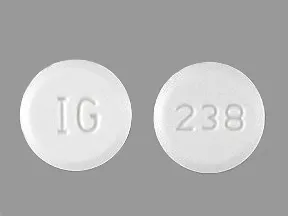 | |
| Amlodipine - | 10 mg tablet | 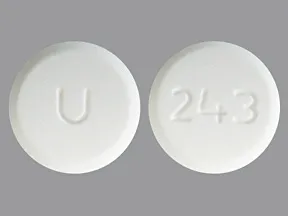 | |
| Amlodipine - | 2.5 mg tablet |  | |
| Amlodipine - | 2.5 mg tablet | 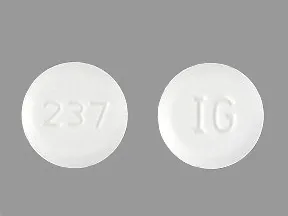 | |
| Amlodipine - | 2.5 mg tablet | 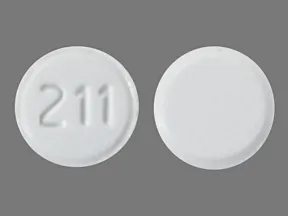 | |
| Amlodipine - | 5 mg tablet | 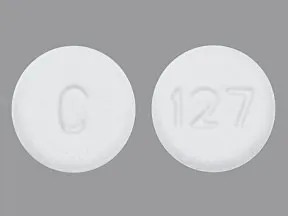 | |
| Amlodipine - | 2.5 mg tablet | 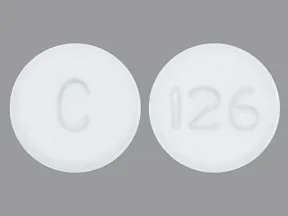 | |
| Amlodipine - | 10 mg tablet |  | |
| Amlodipine - | 5 mg tablet |  | |
| Amlodipine - | 10 mg tablet | 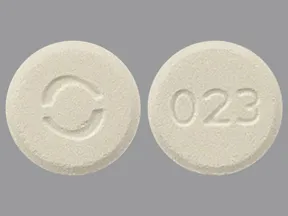 | |
| Amlodipine - | 5 mg tablet |  | |
| Amlodipine - | 10 mg tablet | 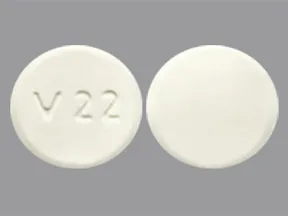 | |
| Amlodipine - | 5 mg tablet |  | |
| Amlodipine - | 5 mg tablet | 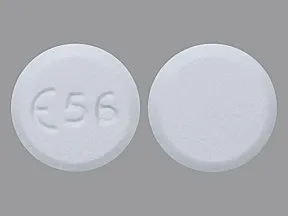 | |
| Amlodipine - | 5 mg tablet | 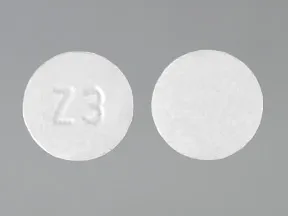 | |
| Amlodipine - | 5 mg tablet | 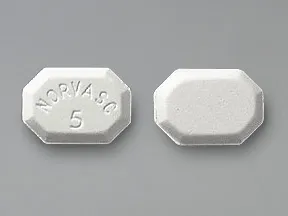 | |
| Amlodipine - | 10 mg tablet | 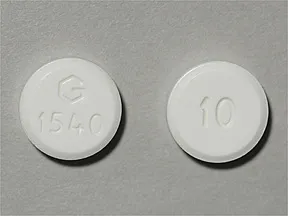 | |
| Amlodipine - | 2.5 mg tablet |  | |
| Amlodipine - | 2.5 mg tablet | 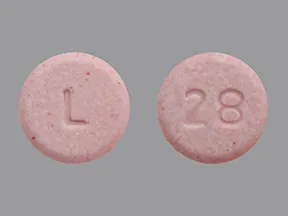 | |
| Amlodipine - | 10 mg tablet |  | |
| Amlodipine - | 10 mg tablet | 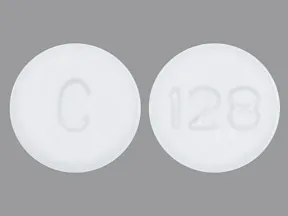 | |
| Amlodipine - | 2.5 mg tablet | 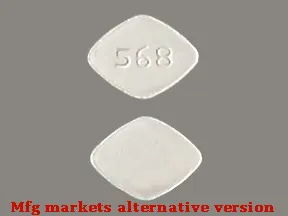 | |
| Amlodipine - | 2.5 mg tablet | 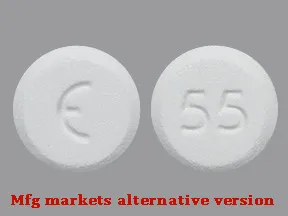 | |
| Amlodipine - | 10 mg tablet | 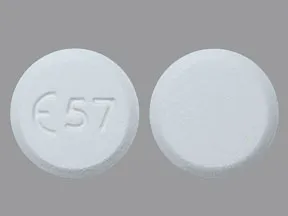 | |
| Amlodipine - | 2.5 mg tablet | 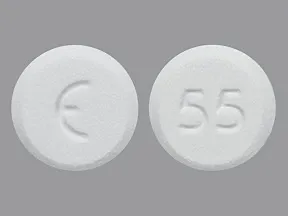 | |
| Amlodipine - | 10 mg tablet |  | |
| Amlodipine - | 5 mg tablet | 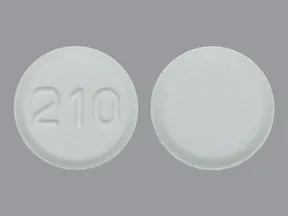 | |
| Amlodipine - | 10 mg tablet | 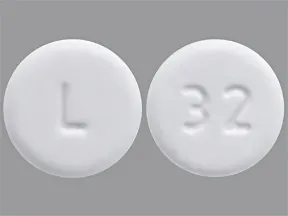 | |
| Amlodipine - | 5 mg tablet | 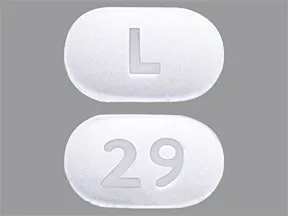 | |
| Amlodipine - | 5 mg tablet | 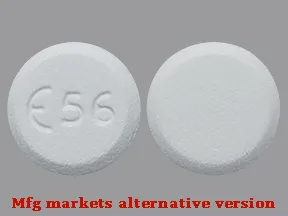 | |
| Amlodipine - | 5 mg tablet |  | |
| Amlodipine - | 10 mg tablet |  | |
| Amlodipine - | 2.5 mg tablet |  | |
| Amlodipine - | 10 mg tablet | 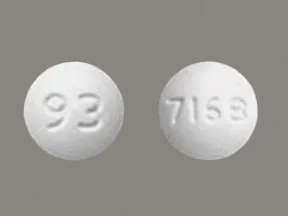 | |
| Amlodipine - | 2.5 mg tablet |  | |
| Amlodipine - | 2.5 mg tablet | 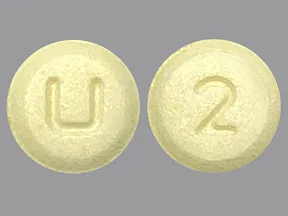 | |
| Amlodipine - | 5 mg tablet | 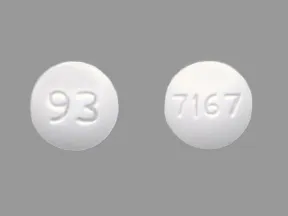 | |
| Amlodipine - | 5 mg tablet | 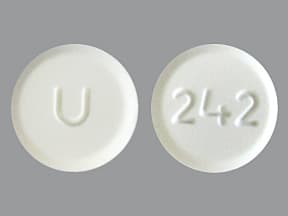 | |
| Amlodipine - | 2.5 mg tablet |  | |
| Amlodipine - | 10 mg tablet | 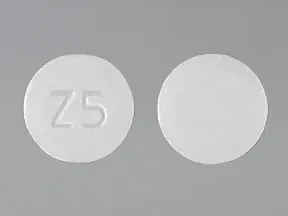 | |
| Amlodipine - | 2.5 mg tablet | 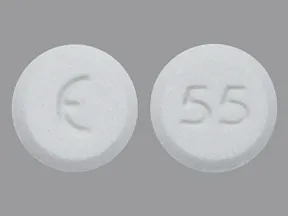 | |
| Amlodipine - | 5 mg tablet | 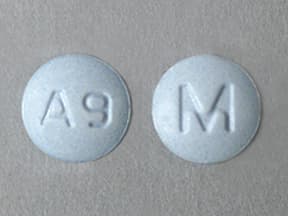 | |
| Amlodipine - | 5 mg tablet |  | |
| Amlodipine - | 2.5 mg tablet | 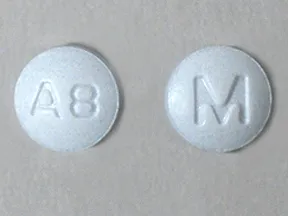 | |
| Amlodipine - | 5 mg tablet |  | |
| Amlodipine - | 2.5 mg tablet | 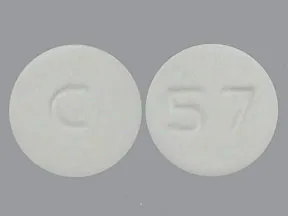 | |
| Norvasc (amlodipine) - | 2.5 mg tablet |  | |
| Norvasc (amlodipine) - | 5 mg tablet |  | |
| Norvasc (amlodipine) - | 10 mg tablet |  |
Copyright © 2010 First DataBank, Inc.
Patient Handout
Amlodipine
AMLODIPINE - ORAL
(am-LOE-di-peen)
COMMON BRAND NAME(S): Norvasc
USES: Amlodipine is used with or without other medications to treat high blood pressure. Lowering high blood pressure helps prevent strokes, heart attacks, and kidney problems. Amlodipine belongs to a class of drugs known as calcium channel blockers. It works by relaxing blood vessels so blood can flow more easily.Amlodipine is also used to prevent certain types of chest pain (angina). It may help to increase your ability to exercise and decrease the frequency of angina attacks. It should not be used to treat attacks of chest pain when they occur. Use other medications (such as sublingual nitroglycerin) to relieve attacks of chest pain as directed by your doctor.
HOW TO USE: Read the Patient Information Leaflet if available from your pharmacist before you start taking amlodipine and each time you get a refill. If you have any questions, ask your doctor or pharmacist.Take this medication by mouth with or without food as directed by your doctor, usually once daily.If you are using the liquid form of this medication, check the manufacturer's information or ask your pharmacist for specific directions. Some brands of the liquid form should be shaken before use, while other brands do not need to be shaken before use. Carefully measure the dose using a special measuring device/spoon. Do not use a household spoon because you may not get the correct doseThe dosage is based on your medical condition and response to treatment. Your doctor may gradually increase your dose. Follow your doctor's instructions carefully.Use this medication regularly to get the most benefit from it. To help you remember, take it at the same time each day. Keep taking this medication even if you feel well. Most people with high blood pressure do not feel sick.If used for angina, this medication must be taken regularly to be effective. It should not be used to treat angina when it occurs. Use other medications (such as sublingual nitroglycerin) to relieve an angina attack as directed by your doctor. Consult your doctor or pharmacist for details.Tell your doctor if your condition does not get better or if it gets worse (for example, your blood pressure readings remain high or increase, chest pain continues or worsens).
SIDE EFFECTS: Dizziness, lightheadedness, swelling ankles/feet, or flushing may occur. If any of these effects last or get worse, tell your doctor or pharmacist promptly.To reduce the risk of dizziness and lightheadedness, get up slowly when rising from a sitting or lying position.Remember that this medication has been prescribed because your doctor has judged that the benefit to you is greater than the risk of side effects. Many people using this medication do not have serious side effects.Tell your doctor right away if you have any serious side effects, including: fast/irregular/pounding heartbeat, fainting.Although this medication is effective in preventing chest pain (angina), some people who already have severe heart disease may rarely develop worsening chest pain or a heart attack after starting this medication or increasing the dose. Get medical help right away if you experience: worsening chest pain, symptoms of a heart attack (such as chest/jaw/left arm pain, shortness of breath, unusual sweating).A very serious allergic reaction to this drug is rare. However, get medical help right away if you notice any symptoms of a serious allergic reaction, including: rash, itching/swelling (especially of the face/tongue/throat), severe dizziness, trouble breathing.This is not a complete list of possible side effects. If you notice other effects not listed above, contact your doctor or pharmacist.In the US -Call your doctor for medical advice about side effects. You may report side effects to FDA at 1-800-FDA-1088 or at www.fda.gov/medwatch.In Canada - Call your doctor for medical advice about side effects. You may report side effects to Health Canada at 1-866-234-2345.
PRECAUTIONS: Before taking amlodipine, tell your doctor or pharmacist if you are allergic to it; or to other dihydropyridine calcium channel blockers (such as nisoldipine, nifedipine) or if you have any other allergies. This product may contain inactive ingredients, which can cause allergic reactions or other problems. Talk to your pharmacist for more details.Before using this medication, tell your doctor or pharmacist your medical history, especially of: a certain structural heart problem (aortic stenosis), very low blood pressure, liver disease.This drug may make you dizzy. Alcohol or marijuana (cannabis) can make you more dizzy. Do not drive, use machinery, or do anything that needs alertness until you can do it safely. Limit alcoholic beverages. Talk to your doctor if you are using marijuana (cannabis).Before having surgery, tell your doctor or dentist about all the products you use (including prescription drugs, nonprescription drugs, and herbal products).Older adults may be more sensitive to the effects of this drug, especially dizziness.During pregnancy, this medication should be used only when clearly needed. Discuss the risks and benefits with your doctor.This drug passes into breast milk. Consult your doctor before breastfeeding.
DRUG INTERACTIONS: Drug interactions may change how your medications work or increase your risk for serious side effects. This document does not contain all possible drug interactions. Keep a list of all the products you use (including prescription/nonprescription drugs and herbal products) and share it with your doctor and pharmacist. Do not start, stop, or change the dosage of any medicines without your doctor's approval.Some products have ingredients that could raise your blood pressure. Tell your pharmacist what products you are using, and ask how to use them safely (especially cough-and-cold products, diet aids, or NSAIDs such as ibuprofen/naproxen).
OVERDOSE: If someone has overdosed and has serious symptoms such as passing out or trouble breathing, call 911. Otherwise, call a poison control center right away. US residents can call their local poison control center at 1-800-222-1222. Canada residents can call a provincial poison control center. Symptoms of overdose may include: fainting, severe dizziness.
NOTES: Do not share this medication with others.Lifestyle changes that may help this medication work better include exercising, stopping smoking, reducing stress, and eating a low-cholesterol/low-fat diet. Consult your doctor for more details.Lab and/or medical tests (such as blood pressure) should be done while you are taking this medication. Keep all medical and lab appointments. Consult your doctor for more details.Check your blood pressure regularly while taking this medication. Learn how to monitor your own blood pressure at home, and share the results with your doctor.
MISSED DOSE: If you miss a dose, take it as soon as you remember. If it is near the time of the next dose, skip the missed dose. Take your next dose at the regular time. Do not double the dose to catch up.
STORAGE: Store the tablets at room temperature away from light and moisture. Do not store in the bathroom. Keep all medications away from children and pets.Different brands of the liquid form of this medication have different storage needs. Check the product package for instructions on how to store your brand, or ask your pharmacist.Do not flush medications down the toilet or pour them into a drain unless instructed to do so. Properly discard this product when it is expired or no longer needed. Consult your pharmacist or local waste disposal company.
Information last revised March 2024. Copyright(c) 2024 First Databank, Inc.
IMPORTANT: HOW TO USE THIS INFORMATION: This is a summary and does NOT have all possible information about this product. This information does not assure that this product is safe, effective, or appropriate for you. This information is not individual medical advice and does not substitute for the advice of your health care professional. Always ask your health care professional for complete information about this product and your specific health needs.
Formulary
Adding plans allows you to compare formulary status to other drugs in the same class.
To view formulary information first create a list of plans. Your list will be saved and can be edited at any time.
Adding plans allows you to:
- View the formulary and any restrictions for each plan.
- Manage and view all your plans together – even plans in different states.
- Compare formulary status to other drugs in the same class.
- Access your plan list on any device – mobile or desktop.




